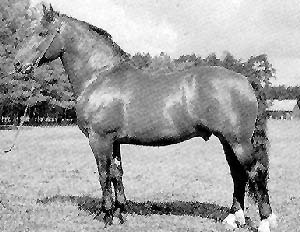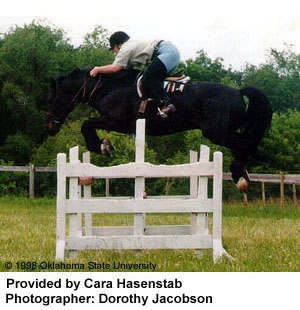

Latvian


Introduction: If you have any comments or suggestions, please click here.
Names: Latvian, Latvian Draft. I have chosen to use the shorter for now. There are many other names that I will add later!
Origin: The Latvian breed was developed in Latvia from the beginning of the 20th century up to 1952 by crossing the native horses with west European harness and harness-saddle breeds. A special role in breed formation was played by the Okte stud in the Talsa region. Oldenburg, Hanoverian and to a lesser extent Holstein stallions had the most influence. Between 1921 and 1940, 65 Oldenburg stallions and 42 Oldenburg mares were imported from the Netherlands and Germany; they became the core of the breed. Besides the purebred Oldenburgs, Oldenburg crosses and Hanoverian, Norfolk Roadster, Ardennes and East Friesians were widely used. The Lithuanian and the Latvian are both based on small northern Zemaitukas and imported Finnish Drafts, with later crosses of Swedish Ardennes and Oldenburg.
Breeding: Two types of Latvian have been evolved--the harness horses and the equestrian sports horses. Prior to 1960, the harness type was emphasized. Subsequently, as mass scale equestrian sports developed in Latvia on a large scale, the number of horses of the sport type was increased through infusion of the Hanoverian and, to a less extent, Thoroughbred blood. Besides (or rather, within) these two intra-breed types, there are four major lines. Pure breeding and limited crossing with Hanoverian and Oldenburg stallions are the main improvement methods. The best farms are Burnieke state farm, Uzvere and Tervete collective farms and the Sigulda experimental farm of the Institute of Animal Breeding. (When I have more time, I will look into these farms and find out if they are still working.)
Description: The modern Latvian is a successful combination of the features of the utility and saddle horses. Tall, heavy muscled and bony, in format they are intermediate between saddle and harness horses. Latvians have a well-proportioned and solid build. Defects include short and ringboned pasterns and cow hocks.
Bone: Bone structure is solid.
Chest: Broad.
Color: The most common colors are bay, brown and black; chestnut is less frequent.
Joints: Sometimes coarse. Knee-joints and hocks are well-developed.
Legs: Properly set.
Muscles: Well developed.
Size: I like that
these measurements are so detailed, but they are a little too complex for me so
I have figured the average height of the horses for quick info. I will
leave the rest for more advanced mathematicians! The average height
appears to be about 16 hands for stallions and 15 and a half hands for mares.
The
average measurements (in centimeters) of stallions are: height at withers-164, oblique
body length-166, chest girth-190, cannon bone girth-23. Taller stallions
(168-170 cm [more like 16 and a half hands]) are now being used due to the popularity of the riding type. The
average measurements (in cm) of the mares are 161, 167, 191 and 22 respectively.
Withers: Moderately pronounced, or high and long and with a normal slope.
Temperament: Very equable.
Features: Again,
the information is very detailed, but I try to include everything I find so bear
with me until I have time to study it out and translate it into measurements
that even I can understand! Just to give you (and me!) an idea, I will
translate the first record. 2000 meters is approximately 6562 feet (or not
quite a quarter of a mile), and 150 kilograms is actually a little more than 330
pounds.
Latvian
horses have shown good results in performance tests both in harness and under
saddle, particularly in competitions. The records are 2000 meter draught walk with a
pull of 150 kilograms--13 min 40.6 sec; 2000 m draught trot with a pulling effort of 50
kg--4 min 36.8 sec; draught endurance with a pull of 300 kg, 1537 m and the
maximum pull 927 kg.
Uses:
Accomplishments:
Curiosities:
Profiles:
Conclusion: